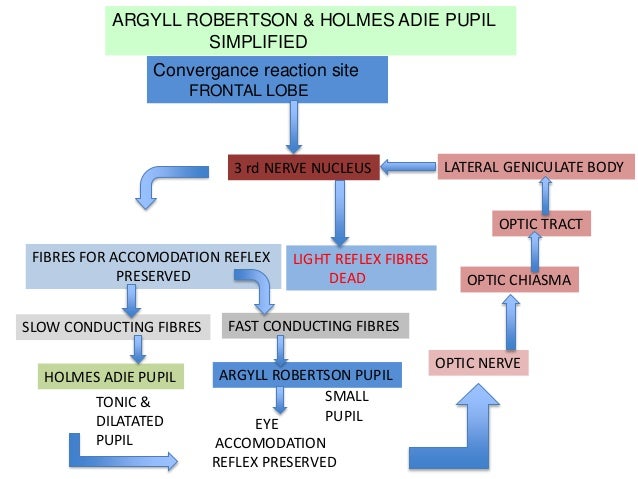

This principle still forms the basis for modern filtering surgical procedures for glaucoma. Creating a small hole in the sclera ( anterior sclerotomy) to drain the aqueous humor, would, he reasoned, lower intraocular pressure. The Argyll Robertson pupil became a pathognomonic sign for the diagnosis of syphilis affecting the central nervous system.Īrgyll Robertson was the first to publish a description of and results following a trephine operation for the treatment of glaucoma. He describes small pupils which did not constrict response to stimulation with light but constricted normally during accommodation and convergence. In 1869 he published a paper giving the first description of unusual reactions of the pupils to light and accommodation in patients with tabes dorsalis (syphilis affecting the spinal cord).


He also described a symptom of neurosyphilis that affects the pupils of the eye, a condition subsequently known as Argyll Robertson pupil. He correctly predicted that physostigmine would become very important in the treatment of eye disorders and it was later used in the treatment of glaucoma with Ludwig Laqueur's discovery in 1875 that it could lower the intraocular pressure. This was the first miotic agent to be used in ophthalmic practice. As a result of this experiment he recommended that an extract, which contained the active ingredient, the alkaloid physostigmine, be used to reverse the action of atropine, which had been used in fundoscopy to dilate the pupil since Helmholtz's introduction of the ophthalmoscope in 1851. In the company of two colleagues Robertson instilled an extract of Calabar bean first in his left eye, and later at a higher concentration into both eyes. Dr (later Sir) Thomas Richard Fraser, an Edinburgh physician, who had in 1862 been awarded the gold medal for his MD thesis on possible medical uses, drew Argyll Robertson's attention to its property of constricting the pupil of the eye. It had used for judicial execution in Eastern Nigeria. Robert Christison, Professor of Materia Medica at Edinburgh University had in 1855 described the systemic effects of chewing a fragment of Calabar bean. The first was in 1863 when he researched the effects on the eye made by physostigmine, an extract from the Calabar bean ( Physostigma venenosum), which is found in tropical Africa. Robertson made several contributions in the field of ophthalmology. He was lecturer on Diseases of the Eye in the University of Edinburgh.

In 1867 he became assistant ophthalmic surgeon at Edinburgh Royal Infirmary under William Walker, and became senior surgeon in 1870 until he retired in 1897. He then began to lecture on diseases of the eye in the Edinburgh Extramural School of Medicine at Surgeons' Hall. He then joined the Eye Dispensary which his father had helped to found, and qualified as Fellow of the Royal College of Surgeons of Edinburgh in 1862. On return to Edinburgh he became assistant to Professor John Hughes Bennett, Professor of the Institutes of Medicine (physiology) at Edinburgh University. Career Īfter graduating MD in 1857 from the University of St Andrews, he was appointed house surgeon at the Royal Infirmary of Edinburgh before going to Prague to study ophthalmology under Carl Ferdinand von Arlt (1812-1887) and then to Berlin to study under Albrecht von Graefe (1828–1870). Īrgyll Robertson was educated at the Edinburgh Institution and at Neuwied in Germany going on to study medicine at the Universities of Edinburgh and St Andrews. Lockhart Robertson was an eminent psychiatrist and Lord Chancellor's medical visitor. He was born at 58 Queen Street in Edinburgh in 1837, the son of Dr John Argyll Robertson, a surgeon with an interest in surgery of the eye who had served as President of the Royal College of Surgeons of Edinburgh in 1846. He was president of the Royal College of Surgeons of Edinburgh. He introduced physostigmine into ophthalmic practice and the Argyll Robertson pupil is named after him. Douglas Moray Cooper Lamb Argyll Robertson FRSE, FRCSEd LLD (1837 – 3 January 1909) was a Scottish ophthalmologist and surgeon.


 0 kommentar(er)
0 kommentar(er)
